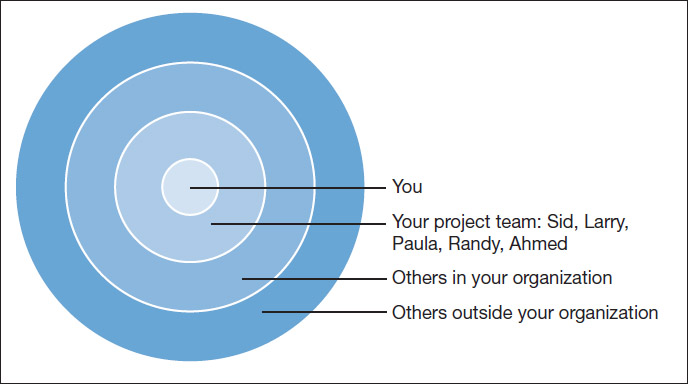4 Writing Collaboratively
Printed Page 57-59

TUTORIAL: Scheduling Meetings Online 
DOWNLOADABLE FORM: Work-Schedule Form 
DOWNLOADABLE FORM: Team-Member Evaluation Form 
DOWNLOADABLE FORM: Self-Evaluation Form 
TUTORIAL: Reviewing Collaborative Documents 
TUTORIAL: Incorporating Tracked Changes 
TUTORIAL: Conducting Online Meetings 
TUTORIAL: Using Wikis for Collaborative Work 
TUTORIAL: Using Collaborative Software 
LEARNINGCURVE: Understanding the Technical Communication Environment and 
The explosive growth of social media over the last decade has greatly expanded the scope of workplace collaboration, reducing former barriers of time and space. Today, people routinely collaborate not only with members of their project teams but also with others within and outside their organization, as shown in Figure 4.1.
But how exactly does this sort of collaboration work? In every possible way. For example, you and other members of your project team might use social media primarily to gather information that you will use in your research. You bring this information back to your team, and then you work exclusively with your team in drafting, revising, and proofreading your document. In a more complex collaboration pattern, you and other members of your team might use social media to gather information from sources around the globe and then reach out to others in your organization to see what they think of your new ideas. Later in the process, you create the outline of your document, in the form of a wiki, and authorize everyone in your own organization to draft sections, pose questions and comments, and even edit what others have written. In short, you can collaborate with any number of people at one or at several stages of the writing process.

Every document is unique and will therefore call for a unique kind of collaboration. Your challenge is to think creatively about how you can work effectively with others to make your document as good as it can be. Being aware of the strengths and limitations of collaborative tools can prompt you to find people in your building and around the world who can help you think about your subject and write about it compellingly and persuasively.